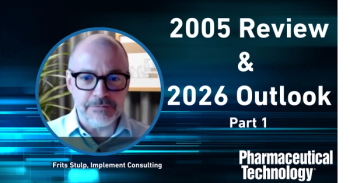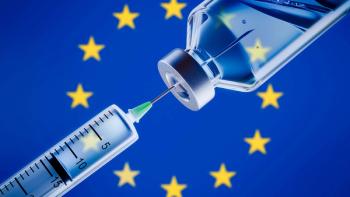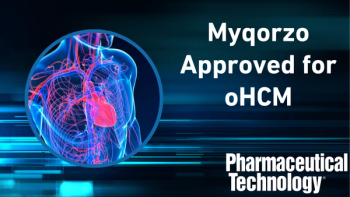
Achieving a Personalized Digital Control Arm for Preclinical Drug Evaluation
At AAPS PharmSci 360 2025, Elly Zhou says digital twins helped forecast the effects of drugs on human drugs via a digital control arm.
In this interview regarding the poster presentation “A Novel Approach to Preclinical Drug Development Using Digital Twins of Ex Vivo Human Lungs” at
The central innovation of her research is using digital twins to create a personalized digital control for every organ being treated. The digital twin leverages large-scale multimodal datasets to train machine learning models that accurately forecast future lung and organ function, Zhou notes. Specifically, after a human lung receives a drug treatment, the digital twin generates the hypothetical untreated effects—the outcome as if the organ was not treated. This, she adds, serves as a robust digital control arm, enabling direct comparison between the observed treatment effects and the digital twin-generated untreated effects within the same lung. By reducing the reliance on traditional cohort-based analysis and the number of human lungs needed for control groups, this approach is designed to reduce study size and accelerate clinical trials, according to Zhou.
The foundation of the data collection is anex-vivo lung perfusion (EVLP) system, an artificial circuit developed by thoracic surgeons at Toronto General Hospital in 2008. EVLP keeps human lungs alive outside the body by perfusing the organ through vasculature and keeping the lungs ventilated at 37 degrees Celsius. This method allowed Zhou and colleagues to test human lungs directly with a condition of interest, such as perfusing a lung with disease on the circuit. The resulting data are considered highly valuable because they are“clean and capture the lungs in isolation,” free from the systemic effects of the rest of the human body, Zhou explains.
The models incorporate multiple layers of data, including lung physiology (air pressure, compliance, gas exchange), biochemistry (pH level, electrolytes), imaging data (X-rays taken during EVLP), proteomic analysis, metabolic biomarkers, and transcriptomic pathways, says Zhou. This rich dataset is used to generate personalized forecasts. As she summarized,"If you are treating a lung in real life,… you give the treatment and then you observe the treatment effects in terms of organ function and behavior, but... digital twins… generate… untreated effects to serve as this personalized digital control for this organ being treated." Furthermore, the EVLP system demonstrated utility in Zhou and team’s study beyond testing, having been used as a therapeutic platform to perform gene editing using CRISPR technology on human lungs.
Check out our
Transcript
*Editor’s Note: This transcript is a direct, unedited rendering of the original audio/video content. It may contain errors, informal language, or omissions as spoken in the original recording.
Hi everyone, my name is Elly. I'm a third year PhD candidate at the University of Toronto in Canada, and my supervisor is Dr. Andrew Sage. And my project is focused on developing digital twins of ex vivo human lungs to potentially accelerate preclinical drug development.
Yeah. So if you think about a randomized control trial where you have the two arm design, you have the control and the treatment. So essentially what happens is that we face two major challenges. The first is the limited availability of human organs for testing, and a second is, we're looking at a significant variability within the inter subject conditions that can cause the result interpretation to be very difficult.
So what digital twins can do is that it can generalize a personalized control for every organ that's been treated. So essentially after you provide a drug to treat the human lung, and then what you observe is essentially the observed treatment effects. And then for the digital twin part is that it's going to generate the untreated effects as if the organ was not treated.
So essentially this will allow us to reduce the reliance on a cohort based analysis where we can do direct comparisons between the untreated and treatment effects within the same lung. So this will reduce the study size because this will reduce the number of human lungs we use as controls. So in that way we'll be able to have a faster clinical trial.
So if we think about the traditional drug evaluation models, for example, animal models or organoids, they typically don't fully or often fully capture this. Complexity within the human body or system. So what digital twins can do is that we actually leverage a large scale multimodal data set to train the machine learning models to accurately forecast lung function, organ function of future time points.
So in this way we'll be able to essentially say what is the untreated effects of this drug in this given lung that's been treated? And in addition on this EVLP system, ex vivo lung perfusion, we’ll actually be able to test human lung with the condition of interest directly.
Like for example, we can perfuse a human lung with disease directly on the circuit and observe its behavior, the organ function.
So for this model, we actually incorporate multiple layers of data. So we have lung physiology data, for example, lung, air pressure, compliance, gas, like oxygenation exchange and also biochemistry data such as pH level, acid base and different electrolytes. We also have imaging data, x-ray images because on this EVLP profusion system, we can actually take x-ray images of the lungs.
And in addition to that, we also have proteomic analysis metabolic biomarkers and also transcriptomic pathways. And they have all been incorporated into the model.
Yeah. And so what digital twin does is its going to serve as this robust and also effective digital control arm in the study. So if you can imagine if you are treating a lung in real life while you give the treatment and then you observe the treatment effects in terms of organ function and behavior but what digital twins do, is that it's going to generate this, I guess, untreated effects to serve as this personalized digital control for this organ being treated. So by doing this comparison between the treatment effects and digital twin-generated, untreated effects, we can actually do a direct comparison to say, what is this drug's impact on this organ been treated.
Yeah, so what EVLP system is Ex vivo lung perfusion, which means we're trying to keep a set of human lungs alive outside the human body. So what we do is that we have this artificial circuit that was originally developed in 2008 by a group of thoracic surgeons at Toronto General Hospital. So what we do is we perfuse the organ through vasculature, keep the lungs ventilated through the trachea, keep everything at 37 degrees Celsius in a physiologically protective environment.
So during the process we'll be able to collect a set of clean multimodal lung function data. That can be used to train the digital twin model. And also this data is very clean in the sense that we're actually just looking at the lungs in isolation without systemic effects of the human body.
And in addition to that, at our hospital, we actually have demonstrated that the EVLP system can be used as a therapeutic platform in the work or in the study led by Dr. Shaf Keshavjee at Toronto General Hospital, we have shown that you can actually do gene editing on a set of human lung using CRISPR technology during EVLP
Newsletter
Get the essential updates shaping the future of pharma manufacturing and compliance—subscribe today to Pharmaceutical Technology and never miss a breakthrough.




